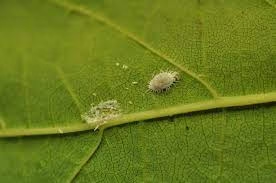Life cycle of mealybugs. Mealybugs are soft, oval-shaped insects whose bodies have noticeable segments. They grow to be .10 to .25 inches.
And are usually white, light pink, or grey in color.
These little creatures tend to be covered in a mealy wax-type substance.
Although the nymphs, known as crawlers, are free of it.
While some people may find mealybugs interesting in terms of how they feed, grow, and spread.
More often than not, anyone who is dealing with them is trying to get rid of them.
The Mealybug Problem
Mealybugs are not usually a problem when they are in their own habitats outdoors in lower populations.
However, farmers, greenhouse growers, and other similar individuals may find these insects to be pests.
The critters are generally found in warmer climates suited for growing lovely flowers, fruits, vegetables, and other forms of vegetation.
Such greenery is also what the insects love to feed off of.
When growers, whether amateur or professional need to eliminate these bugs, it is essential to know first how they grow and spread.
Life Cycle of Mealybugs
Adult female mealybugs can deposit between 300-600 eggs in their excretion.
They are usually found on the underside of a leaf.
These female insects continue laying eggs for approximately tw0 weeks and the hatching occurs within one to three weeks of that.
At this time, the nymphs begin looking for food.
When they locate a suitable feeding site. Where they are able to suck the sap from the foliage, they may decide to settle there.
If a plant begins to succumb to these infestations, the leaves will start to curl and turn yellow, and eventually die.
When affected leaves are cut and the infestations appropriately dealt with, it may be possible to save the rest of the plant.
How Do Mealybugs Spread?
Mealybugs find it an easy task to travel from one plant to another.
As a result, infestations are able to spread quickly and without any difficulty.
In areas where plant leaves overlap, these insects are simply able to crawl from one leaf to the next.
In locations where plants have slightly more distance between them.
These creatures are still able to crawl to the greenery of their choice and settle.
In the event that the particular foliage has little nooks and crannies where tiny creatures can fit.
These mealybugs will likely find them and remain either until the food source dries up or it is time to move on in their development cycle.
When there is sap in plentiful amounts, it’s possible to see numerous mealybugs huddled together in a small location.
Depending on the exact type of mealybug infestation.
It might be possible to see a wax-like fluffy substance that helps to protect them from heat and moisture loss in warmer weather.
This allows them to prolong their feeding in that specific spot as needed.
When it is time to move on, the insects can simply crawl to their next destination.
It is important to note that not all mealybugs spread through leaf and stem infestations.
There are occasions when these insects are located closer to the roots and even underground.
Because the bugs have no difficulty traveling from one area to another.
Life Cycle of Mealybugs
They are able to crawl around stems and roots to locate a feeding area rich in sap.
Such infestations are more difficult to find but may be indicated by foliage that is wilted or yellowing.
There might also be masses of a cotton-like substance in and around the affected area.
Controlling MealyBug Infestations
There are a number of ways that a person can control, and even eliminate, mealybugs.
Smaller infestations may be treated by washing the plants or dabbing rubbing alcohol on the creatures and around the affected areas.
Cutting away infected locations may be necessary.
Introducing other insects such as ladybugs can be of benefit in the longer term to control and prevent further infestation.
There are also commercial products that could be used for the purpose of eliminating and preventing issues with mealybugs.
The choice of product is often based on the level of the problem and the plants involved with the infestation.
Natural substances, such as neem oil, may be of assistance if chemicals are not the preferred option.
When unsure about the severity of the issue, there are professionals who are able to assist with diagnosing and treating the situation.

